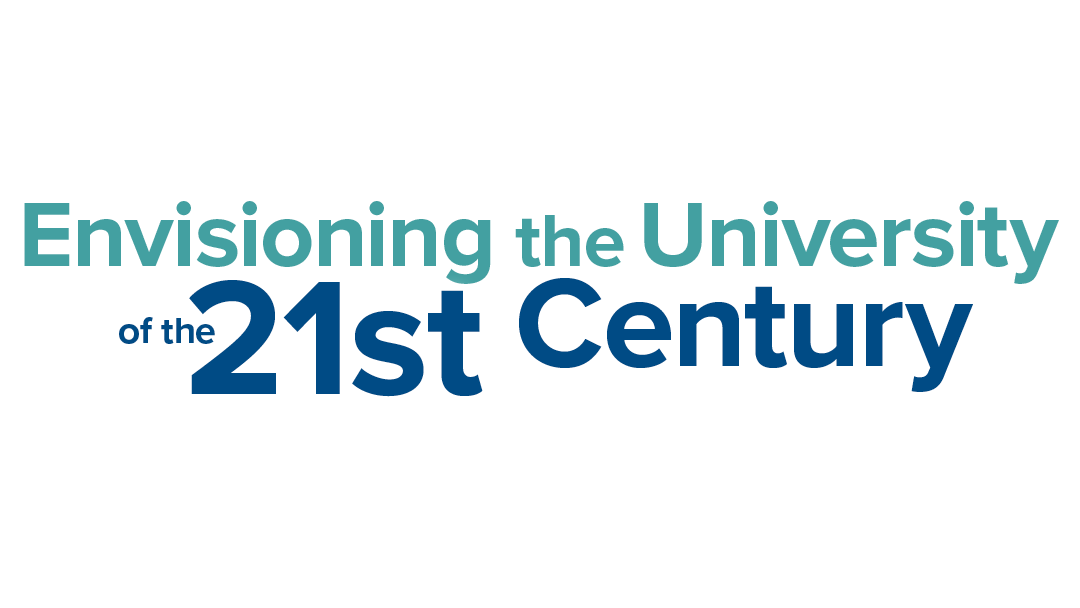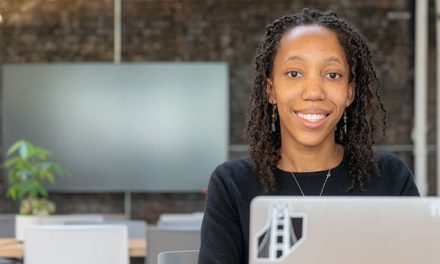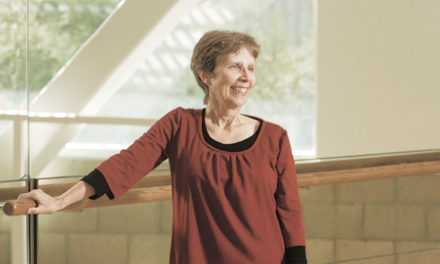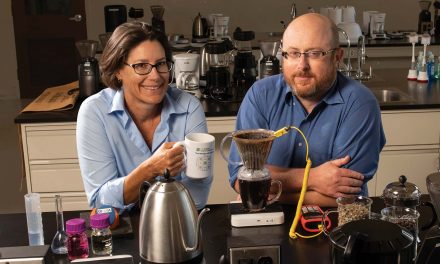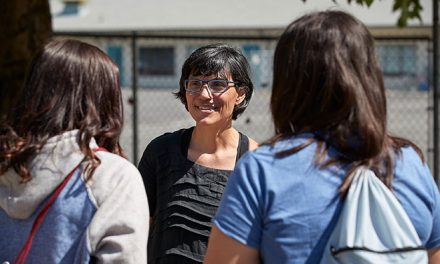A changing student body and evolving needs set the stakes for higher education’s plans for the future.
Illustrations by Marina Muun
What does the University of the 21st Century look like?
Just 16 years in to a new century—and millennium—universities are pondering how to respect their heritage while embracing the potential of the future. Discussions about change at many institutions center on the demographic, economic, technological and pedagogical drivers that are creating shifts everywhere.
And UC Davis is among those leading the charge.
For more than a year these considerations have been part of a larger initiative. The University of the 21st Century will be carefully planned in order to achieve excellence in all areas.
A committee of students, faculty and staff was established in December 2014 to help further envision a school with global impact.
It’s a timely topic with many stakeholders.
Back in 2012, Lee Rainie, director of internet, science and technology at the Pew Research Center, co-penned a study called “The Future of Higher Education.” In it, the authors asked more than 1,000 experts to imagine 2020, with answers ranging from modest to substantial retooling of the college model. “Our respondents were really engaged with the idea that fundamental structures of higher education are already under some pressure,” Rainie said. “They are going to change.”
One thing is for sure: The rhetoric is increasing.
The so-called tech disruption has called into question many traditional institutions, inspiring many to plan ahead. Libraries are examining their fit in a world where information is at our fingertips. Publishers are facing an evolving role for the same reason. Manufacturing and delivery have been affected.
“We can do so much more outside of class, so students have more time to practice and delve deeper during class.”
—Kem Saichaie, associate director at the UC Davis Center for Educational Effectiveness
The discourse helps frame a wide-reaching topic in higher education. Discussions about the University of the 21st Century encompass everything from the layout of the physical campus to how the community addresses the world’s biggest challenges. Recommendations for UC Davis include ways to become more collaborative, problem-guided and flexible.
Such issues play a part in how UC Davis will grow. The University of California has set a target that means the Davis campus will accommodate 1,100 additional undergraduates for 2016-17 (in comparison to last fall’s entering class). Under the 2020 Initiative, a more long-range plan, the university is on a path to add up to 5,000 students by 2020 (the process started in 2011).
As a result, teaching has come to the forefront of many conversations, with an emphasis on what’s best for a large, diverse population.
An evolving student body
At the University of the 21st Century, the traditional image of the college student will be forced to change.
Student populations across the country have already become more racially and ethnically diverse, as well as older, according to the U.S. Department of Education.
At UC Davis, fall 2015 marked the entrance of the most diverse class in its history, with underrepresented minority students making up 29 percent of the entering first-year class. By the 2018-19 school year, UC Davis is on target to become a Hispanic-serving institution, meaning at least 25 percent of undergraduates will be Hispanic.
Experts say this evolution highlights the obligation to think more about these students’ needs.
“The bigger Davis gets, the broader it’s reaching into the pool, which is a good thing,” said Daniel Greenstein, director of education and postsecondary success in the United States Program at the Bill and Melinda Gates Foundation. “It’s also encountering a different range of students and is it necessarily the case that the educational practices we developed over the last 50, 60 years are actually going to work as well for the students of today? The answer is they don’t seem to.”
Why is this an important problem to solve?
According to a study by Georgetown University’s Center on Education and the Workforce, by 2025, two-thirds of all jobs in the U.S. will require education beyond high school, creating an expected shortfall of 11 million skilled workers.
At issue is not how many people go to college but how many finish.
At UC Davis, ways to address the challenge include improved advising services, clearer pathways to transfer and graduation and more small first-year seminars.
A closer look at teaching a diverse population means reconsidering how a majority of students learn and when. Curricula and class formats are now open to debate.
Beyond the traditional classroom
The college lecture is not dead. But it may be reimagined for the University of the 21st Century.
In fact, the work is already underway.
As research continues to point to the effectiveness of active learning techniques in the classroom, several UC Davis faculty members have incorporated them in their courses. The goal, they say, is more integration of information, and as a result, a higher premium is placed on problem solving than regurgitating memorized facts.
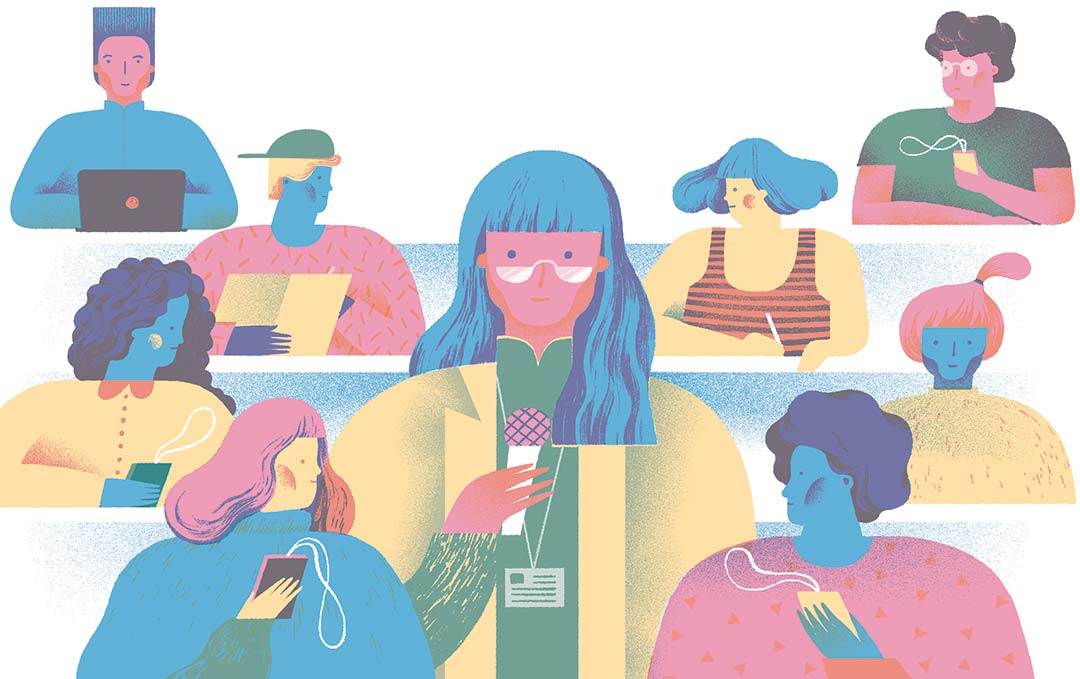
“For the last 13 years of their lives, students have been taught to the test—memorize, memorize, memorize,” said Mitchell Singer, professor of microbiology and molecular genetics.
He is among six instructors who teach introduction to biology and part of a series that sees more than 3,500 students a year. A pilot program, funded by the Gates Foundation a few years ago, allowed the group to rework the curriculum. They focused on hands-on, interactive methods.
Singer now walks the aisles in his lecture hall, cold calling students to pull them into discussions and encouraging group work. Mid-lecture quizzing via remote-like clickers gauges student response and attention, too.
Course overhauls like this one require a lot of work. Entire lesson plans have to be rethought, and expenses can add up due to more teaching assistants and training.
The UC Davis Center for Educational Effectiveness is available to provide instructors at all levels with research-based practices to inform their teaching practices.
“We can do so much more outside of class, so students have more time to practice and delve deeper during class. The instructor can spend class time providing the direct feedback and guidance,” said Kem Saichaie, associate director of learning and teaching support at the UC Davis Center for Educational Effectiveness. “The transmission model—that passive model—works for very few people and with very low levels of success.”
Indeed, those who have tried active learning say they are converts.
Singer said that while his exams have gotten harder, the students’ grades are about the same. “That means we are challenging our students more and they respond. They can do it,” he said.
Catherine Uvarov, a postdoctoral scholar for the Center for Educational Effectiveness, used the same techniques teaching general chemistry last year, attempting to prove the methods could be successful—even at unpopular class times (she taught at 7 to 8 p.m. one quarter, and 8 to 9 a.m. the next). All the instructors used the same pre-assessment in the beginning of the quarter and the same final exam at the end of the course.
“I taught the traditional lecture way, and in this more active approach they know so much more,” she said. “The caliber of student questions was on a whole new level.”
The Betty Irene Moore School of Nursing is banking on similar methods to ensure student success.
“I doubled the number of A’s and cut the number of D’s and F’s in half.”
—Steve Luck, professor of psychology
Founded in 2009, the newest professional school at UC Davis uses forward-thinking instruction methods. When its permanent home opens in 2017, it won’t have any lecture halls. Instead, the design focuses on open spaces for interaction. Collaborative learning studios enable group work, and simulation suites promote practice in lifelike settings.
With an emphasis on nurse leadership, the school’s administration zeroed in on ways to make sure students could summon information in any scenario.
“If I stand here and just lecture to you, the amount that you’ll remember when I get done is very small—and in a week even less,” said Heather M. Young, dean of the school. “But if you have ideas that you work with and apply, your ability to retain that basic knowledge is much higher. It’s about trying to have people get value out of their education.
“You’re learning critical-thinking skills. That’s the other piece that’s so vital.”
New technologies emerge
Of course other teaching methods continue to be explored.
In this technology-enabled information age, schools across the globe have grappled with how to incorporate online learning in ways that don’t sacrifice quality of education.
One answer is the hybrid course, which splits instruction between online and in-person formats. Through careful design, these classes can facilitate student engagement—and replace seat time.
Steve Luck, professor of psychology, taught introduction to cognitive psychology for about 10 years before he moved it to a hybrid model. With a Provost Hybrid Course Award to support the development, Luck revamped the class to eliminate the time spent in lecture and replace it with a discussion section. The lectures instead are delivered online, with videos produced for optimal learning. Frequent quizzing helps guarantee participation and absorption.
The results have been favorable.
“I give them five midterms over the course of the quarter and most of the questions are identical to the questions I used in the traditional version of the course,” Luck said. “I can actually compare results, and basically what happened was I doubled the number of A’s and cut the number of D’s and F’s in half.”
He said students have even told him they model his methods in regular courses, creating quiz questions as they study.

Now he’s developing a hybrid version of general psychology, which serves 3,000 students a year. He said he plans to use the same methods, testing a preliminary version—with fewer students on a pass/fail basis—this spring.
Online-only formats open the possibility of cross-campus instruction. The University of California’s Innovative Learning Technologies Initiative has supported the development of 80 online-only undergraduate courses. Many more are in development, with a goal of leveraging both high-enrollment courses and those that are less commonly taught.
Liz Applegate, senior lecturer in the Department of Nutrition, offers a good example of the former. Every quarter, she teaches the main general nutrition course to as many as 1,000 students. It’s currently a high-flex model, which means students can choose whether they want to attend class in person or virtually.
After the spring quarter, Applegate will work full-time on developing an online-only version of the class—and retire from teaching after 31 years at UC Davis.
“A lot of UC campuses don’t have a general nutrition class or a nutrition department, so it makes sense that UC Davis takes this on and we can share our expertise in nutrition,” Applegate said.
All in all, strategies behind building the University of the 21st Century will incorporate input from many sources. In addition to the initiative’s committee, a group of early-career faculty has been consulted. And in February, the entire campus community was invited to participate in an online brainstorming session to imagine UC Davis’ future. Nearly 2,500 people took part, and the results are currently being analyzed.
“The fundamental enterprise of higher education, to the degree that it’s knowledge generation and transmission, that’s all in play now,” Rainie said.

